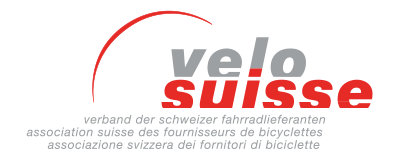The e-bike success story continues
In 2014, 16.7 % more new e-bikes were sold in Switzerland than in the previous year. Sporty bicycles were also on the road to success and grew by 4.2 %. The overall market recorded a plus of 2.4%.
Flashback: In 2013, the bad weather period that lasted from March to early June dampened the willingness of bicycle consumers to buy and many potential buyers postponed the purchase of bicycles until next year. In 2014, the bicycle industry therefore benefited from the pent-up demand - and wonderful spring weather - and sold a total of 325`900 bicycles, a plus of 2.4 %. The wet summer months prevented an even better result. 57,600 new e-bikes were sold in 2014, 16.7 % more than in 2013, three quarters of which were in the category up to 25 km/h and one quarter in the category up to 45 km/h. One thing is clear: the e-bike boom will continue. The slight drop in demand in 2013 was only a transition on the way to a new sales record. Since 2005 over 300`000 new e-bikes have been sold in Switzerland, of which around 270`000 are more or less regularly on our roads. The electric bike boom is also affecting city bikes. Many buyers choose an e-bike instead of a normal bicycle, ride it more often and cover longer distances. The bicycle in general and the sports bike in particular are the most popular fitness equipment for Ms and Mr Schweizer. The undisputed leader among sports bikes is the mountain bike. Including junior MTB's, almost 155`000 new Mounties were sold in 2014. In addition there were 11`000 cross bikes and 15'600 road racing bikes, a total of 181`600 sports bikes. Overall, the sports bike sector grew by 4.2% compared to the previous year.
Market forecast 2015: depending on weather and economic factors
A reliable forecast for the development of the bicycle market in 2015 is hardly possible, many factors influence the purchase of bicycles. Experience has shown that a beautiful spring/summer has a positive effect on demand, whereas demand falls in bad weather. The bicycle leisure sector in particular is very weather-dependent, a few nice or wet weekends more or less increase or decrease interest in bicycles. The strong Swiss franc poses major challenges for bicycle importers, manufacturers and retailers. They are reacting to the current situation with individual measures and offers, thereby reducing the appeal of shopping tourism. The third influencing factor is the development of purchasing power in individual households. Do they behave in a reserved manner or is consumption still going well? The next four to five months will provide information on this.
March 12th, 2015
